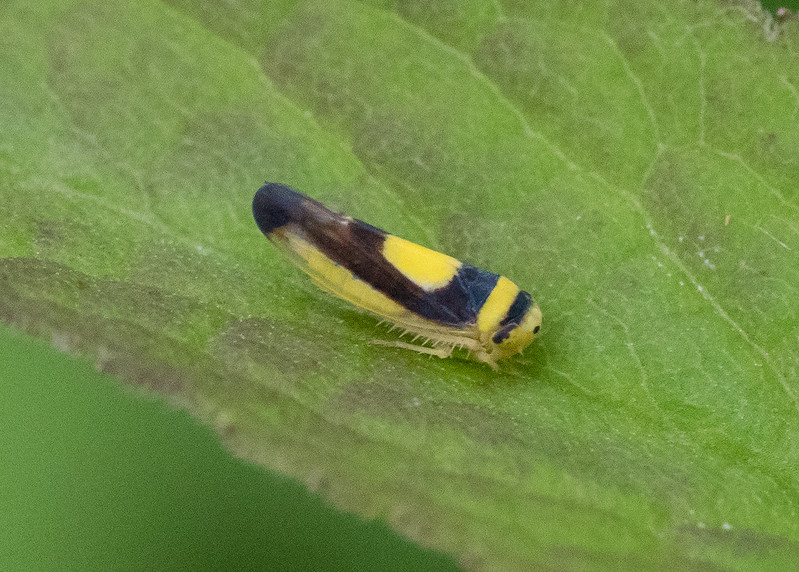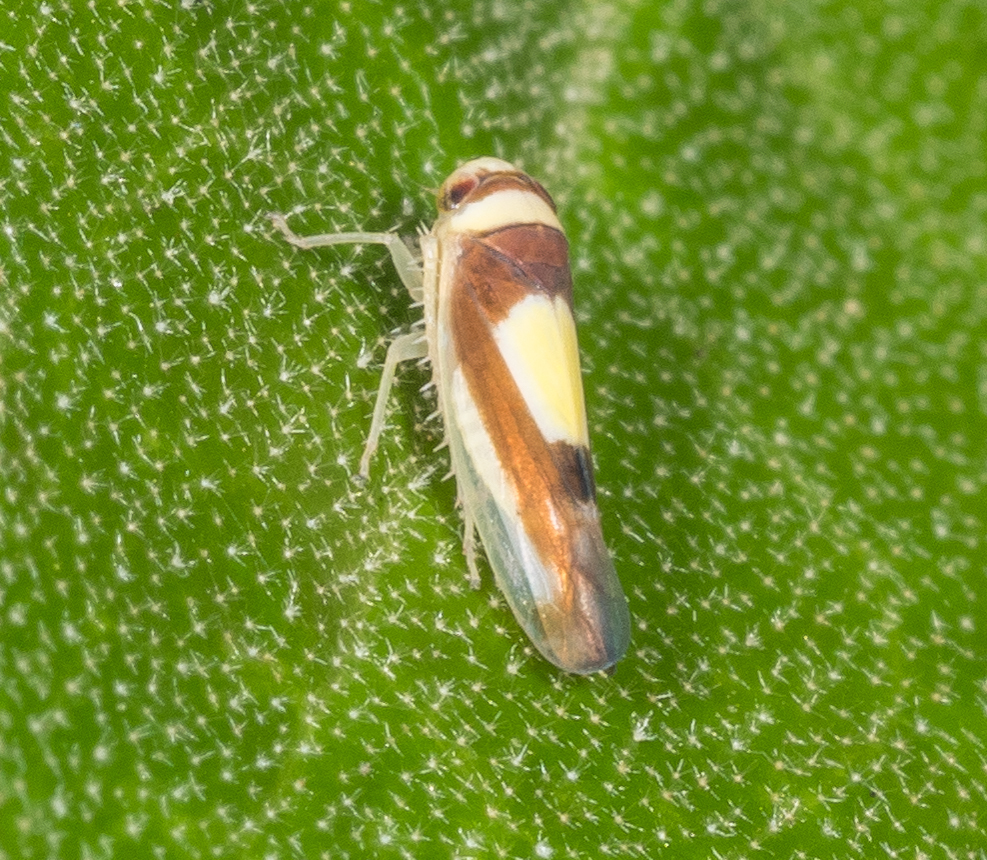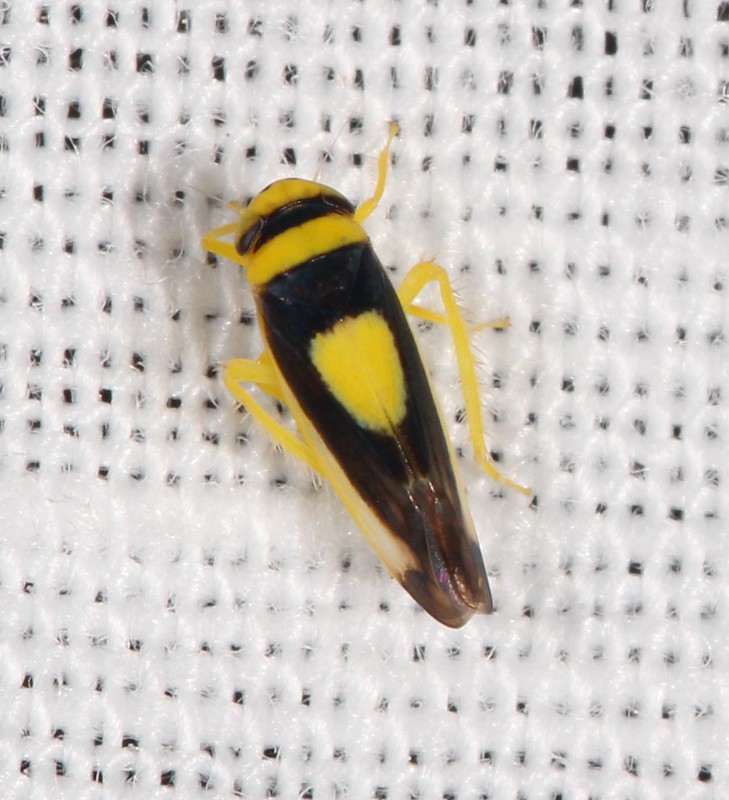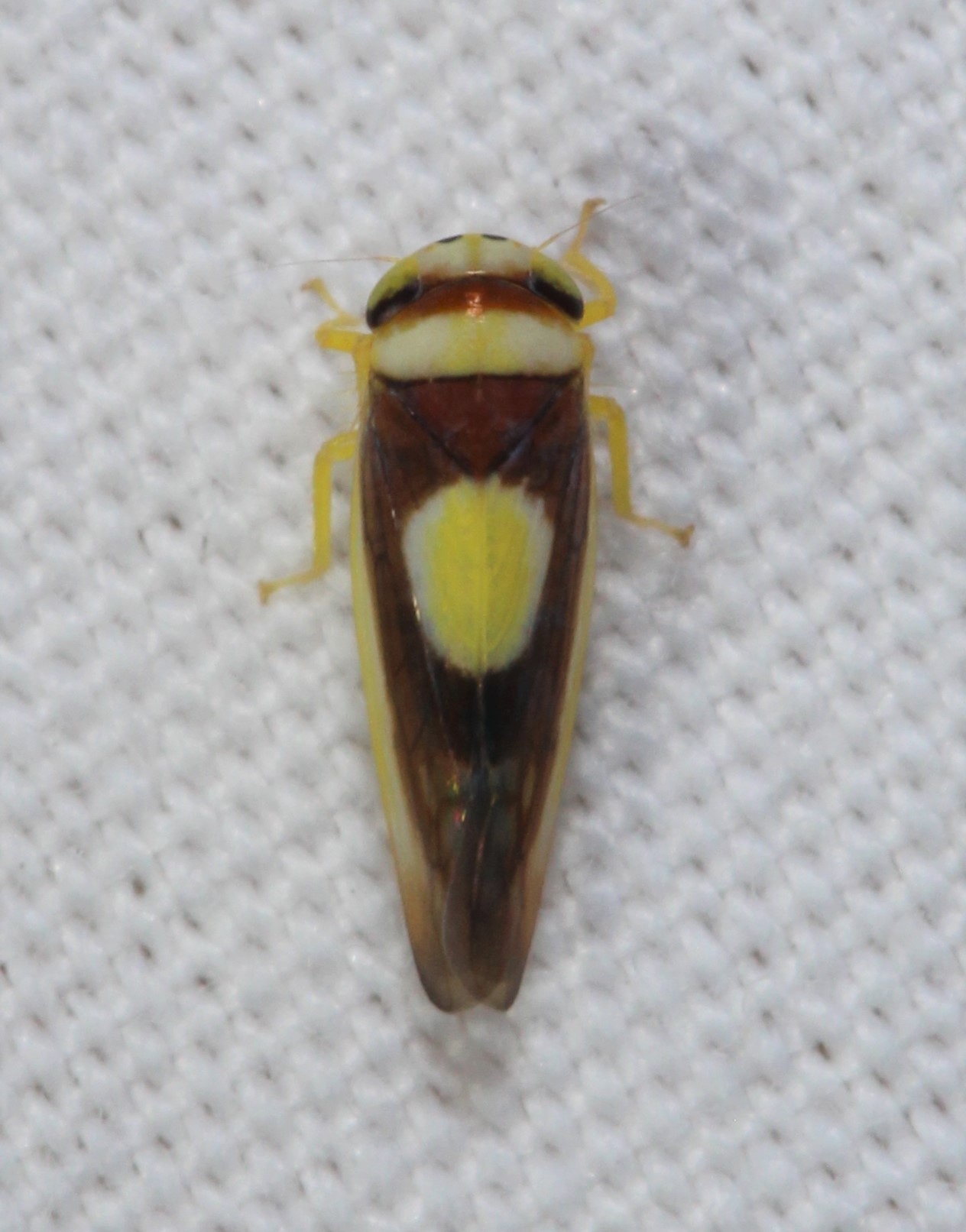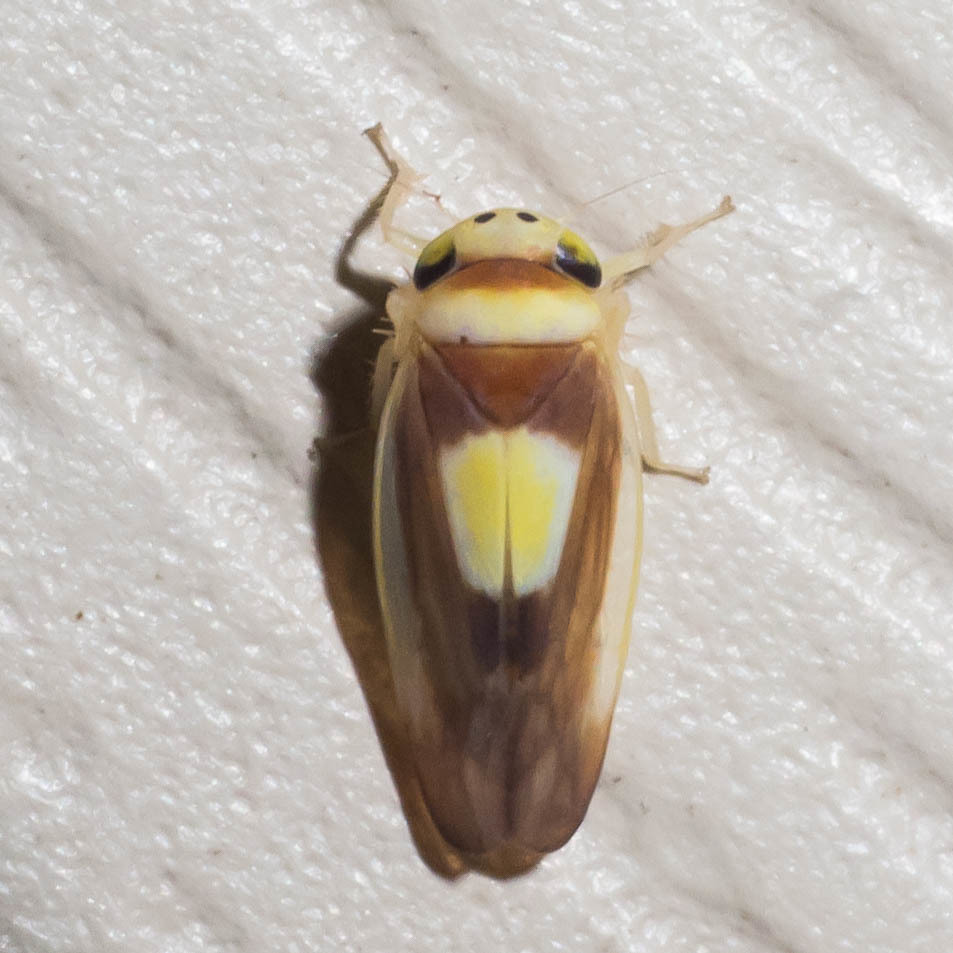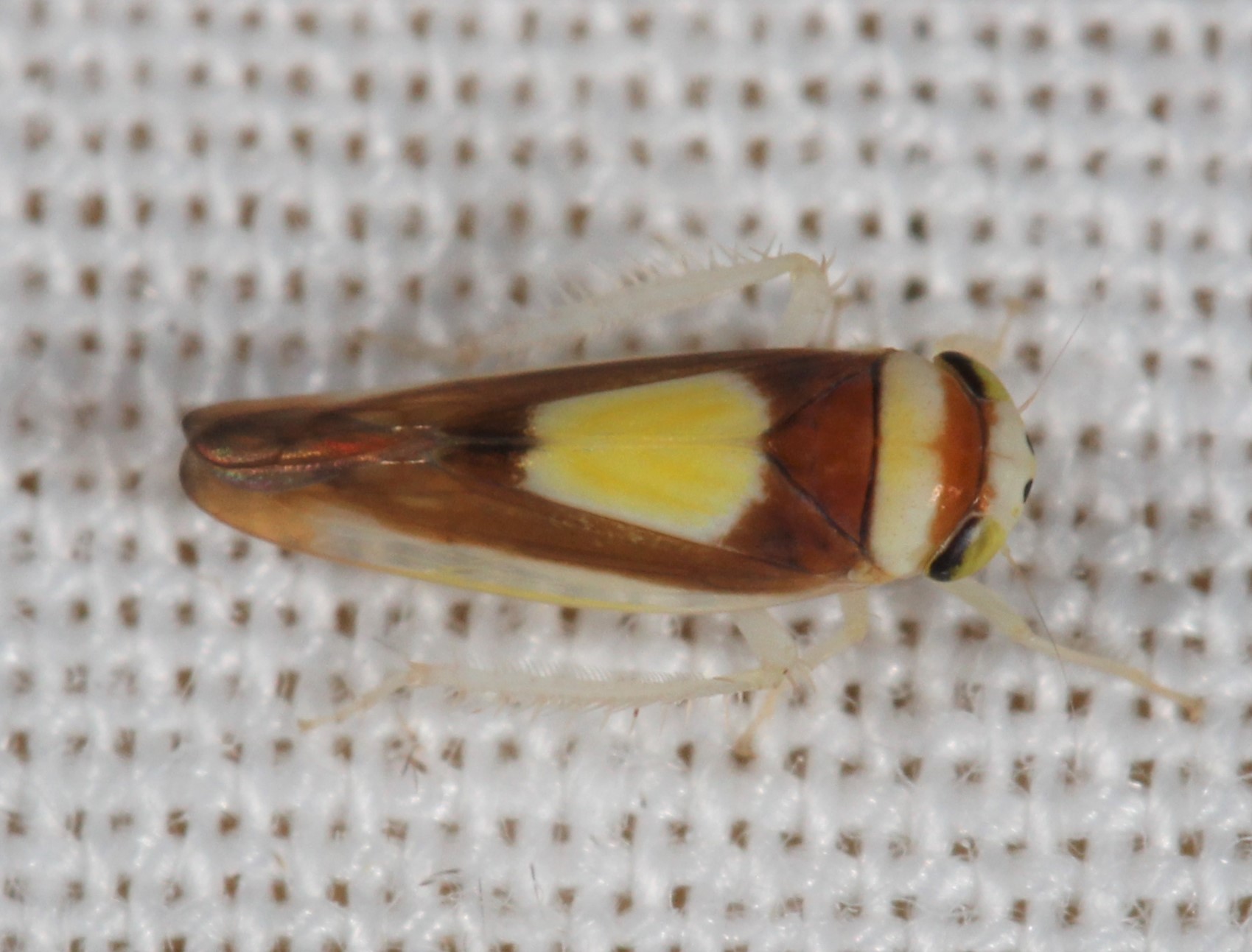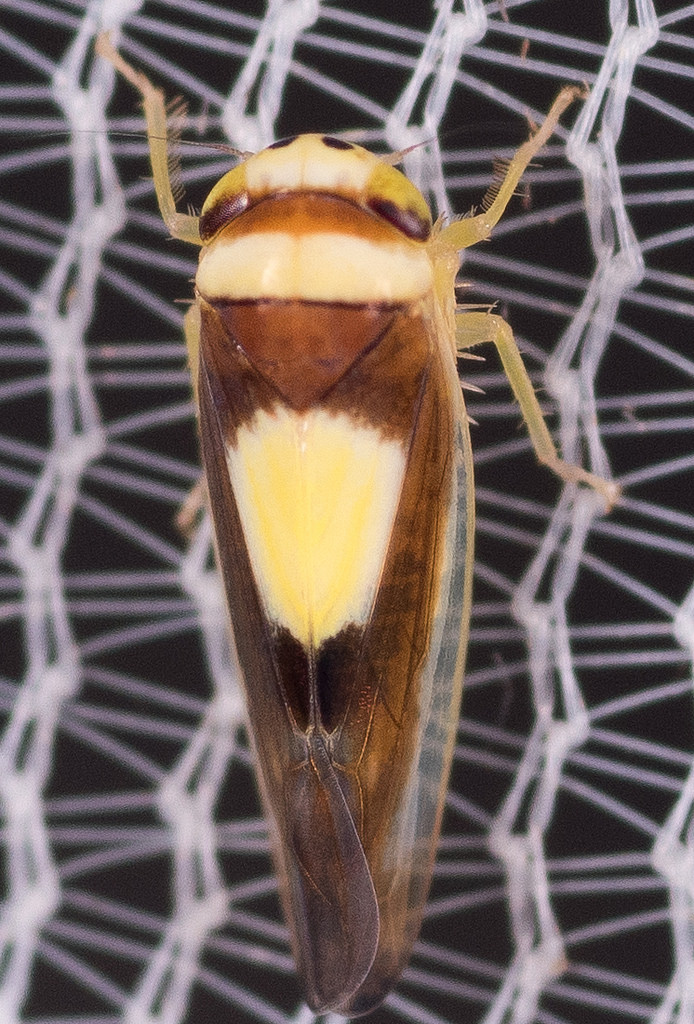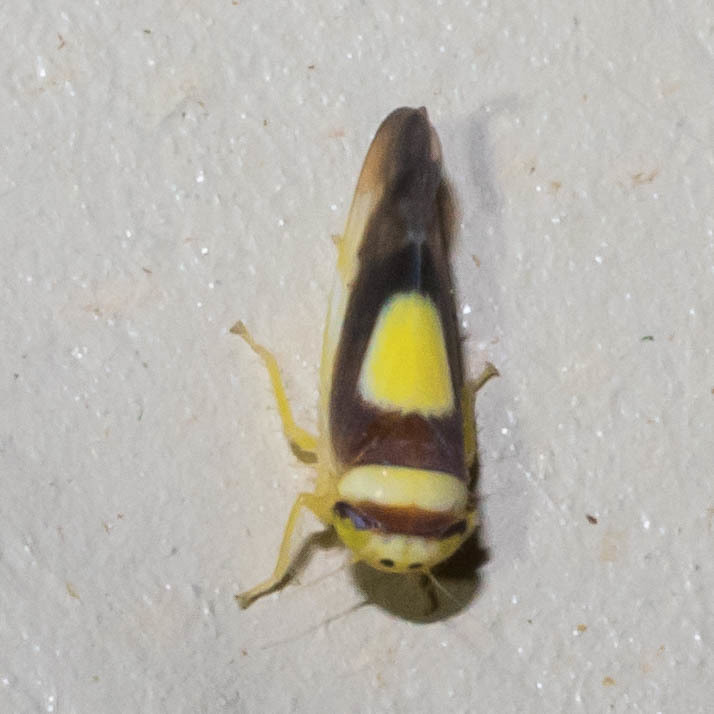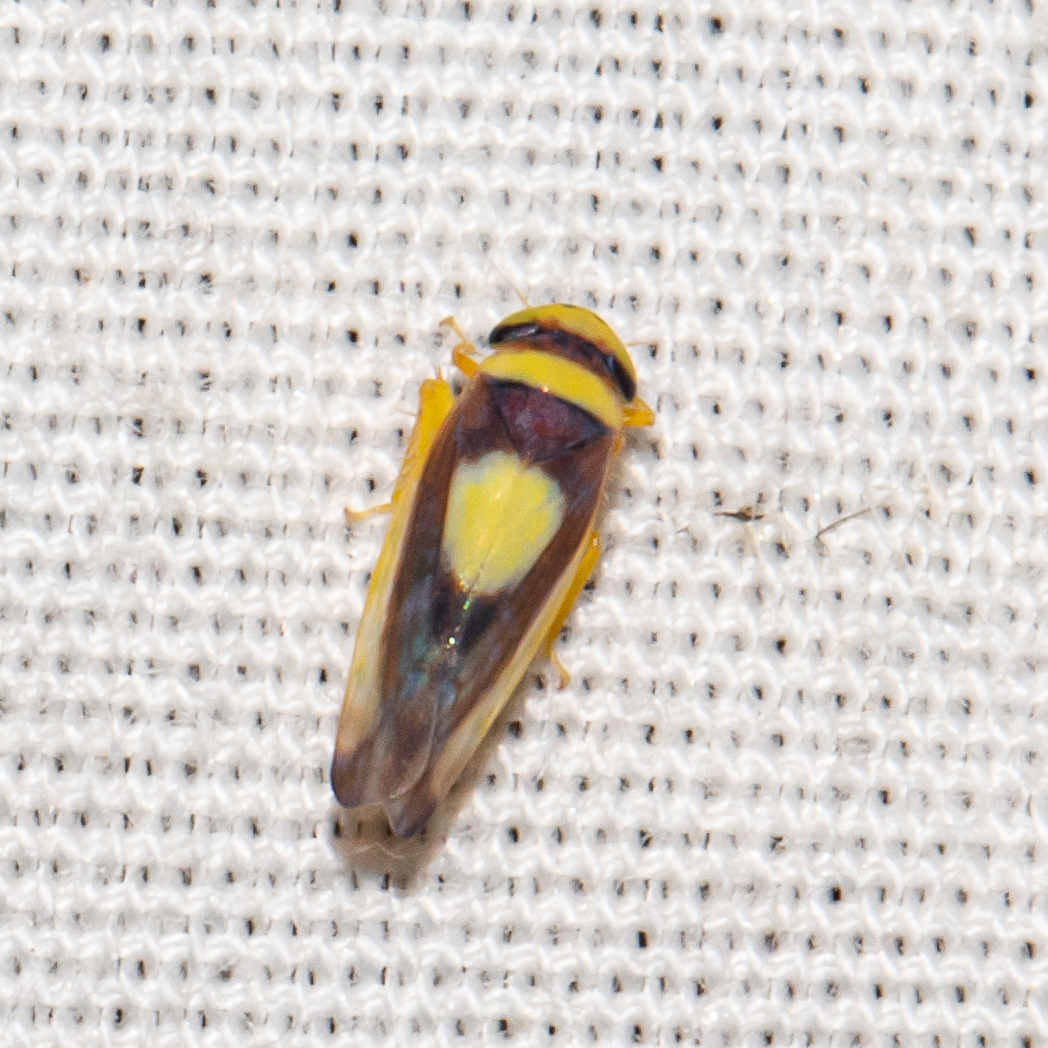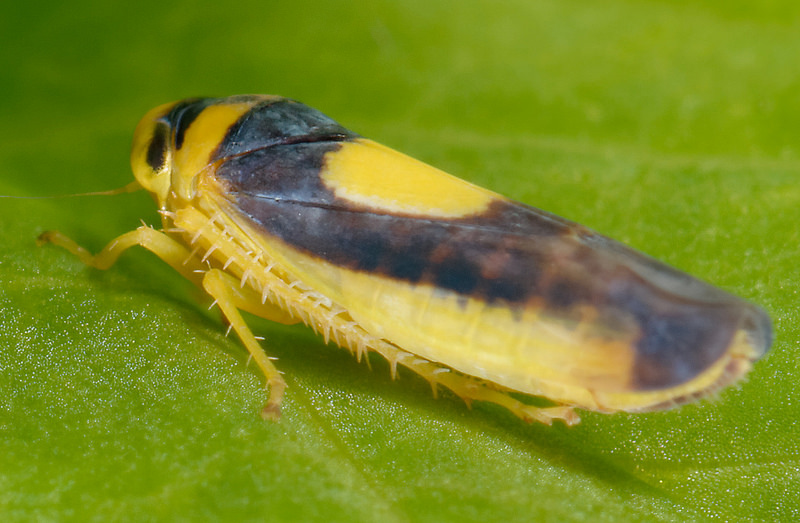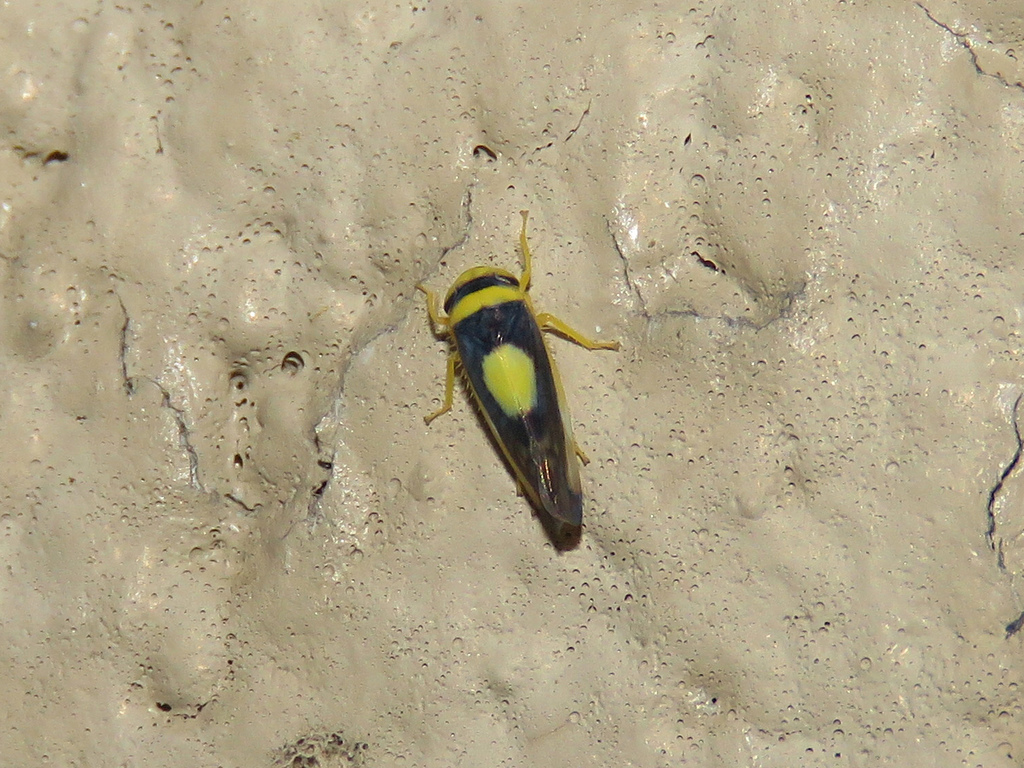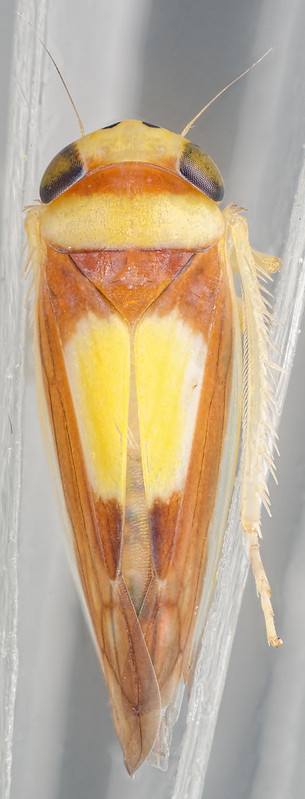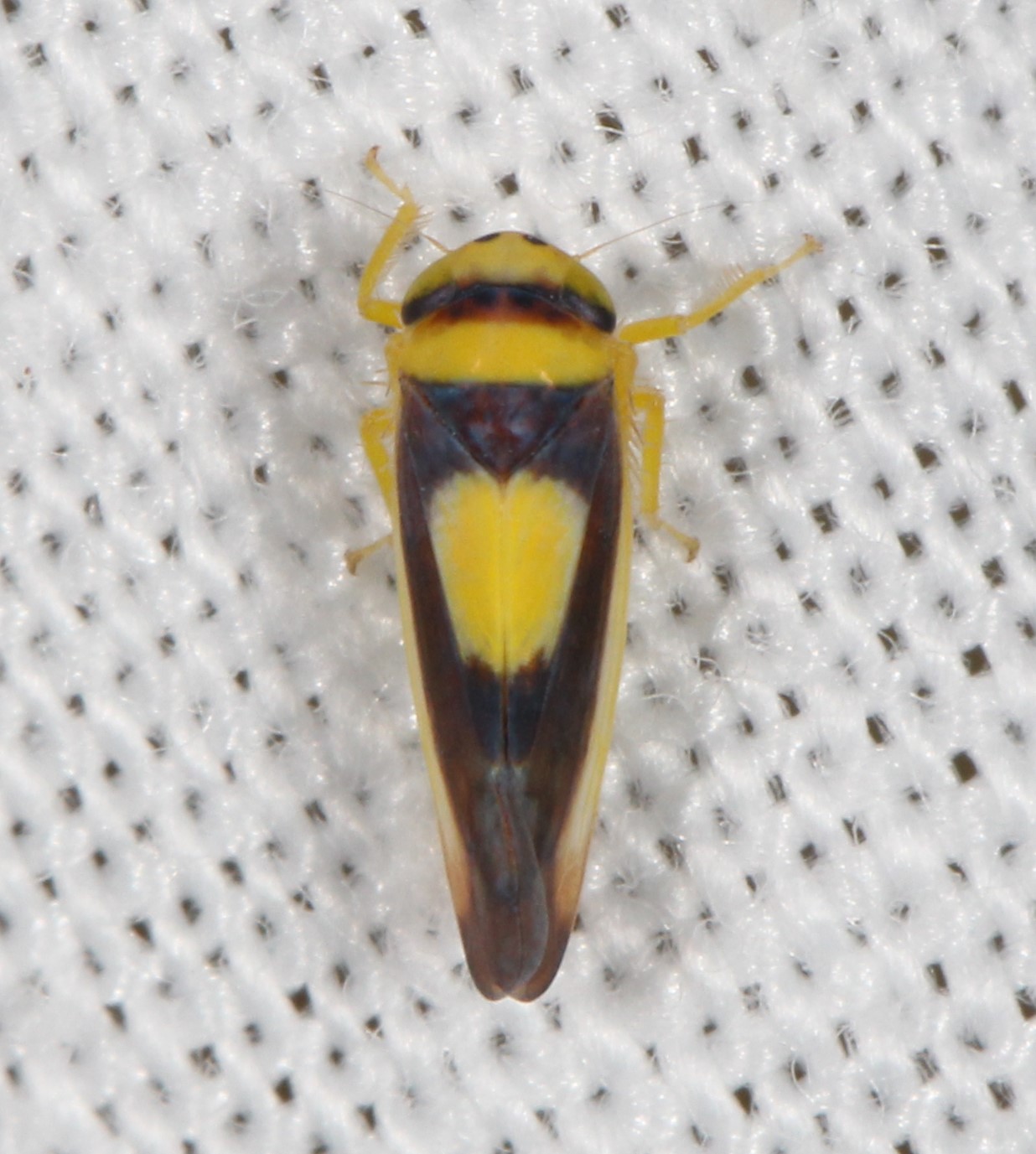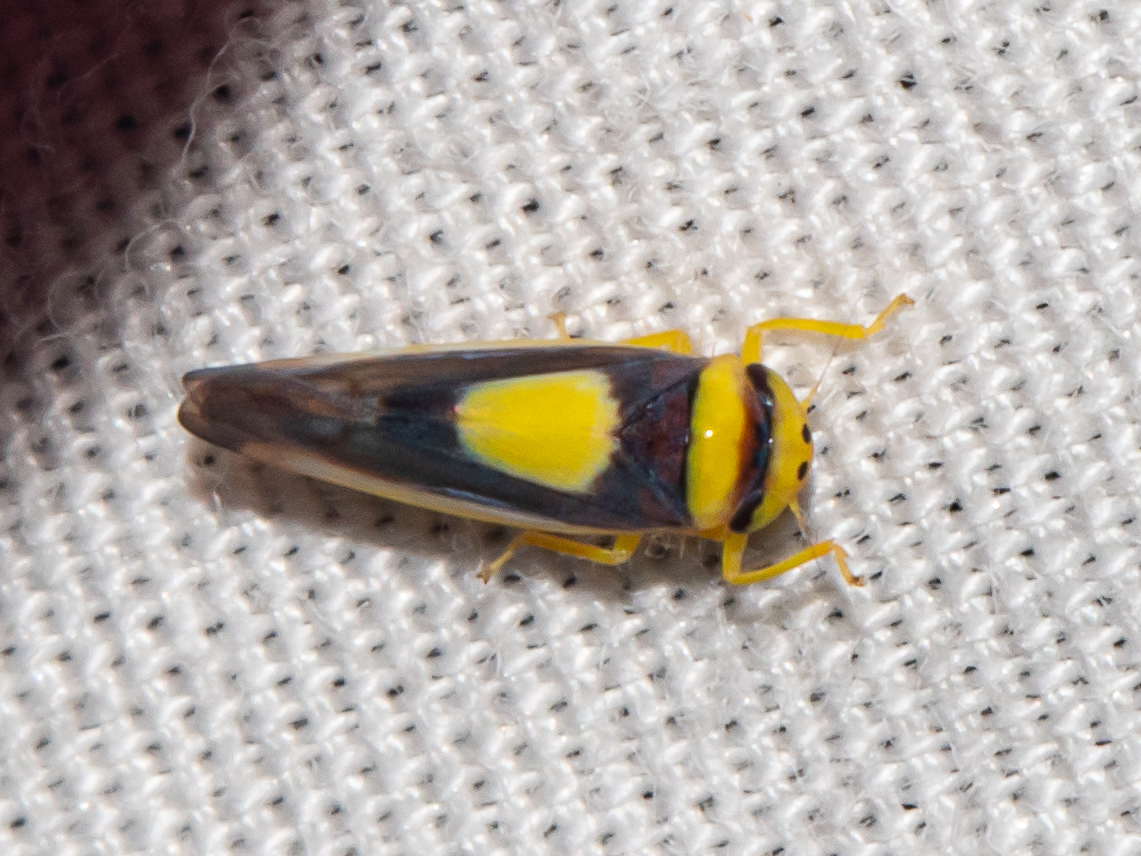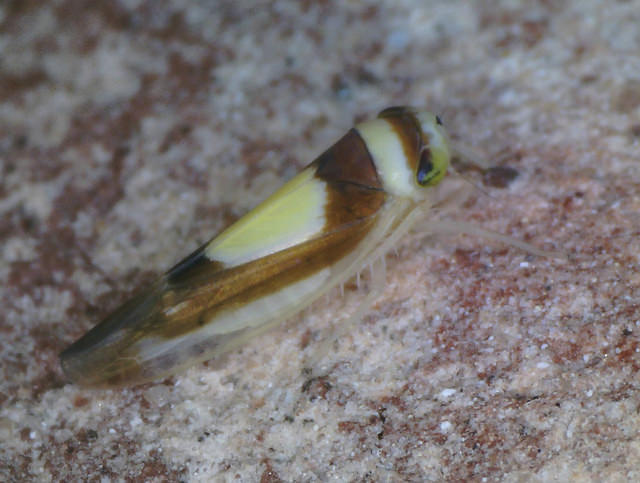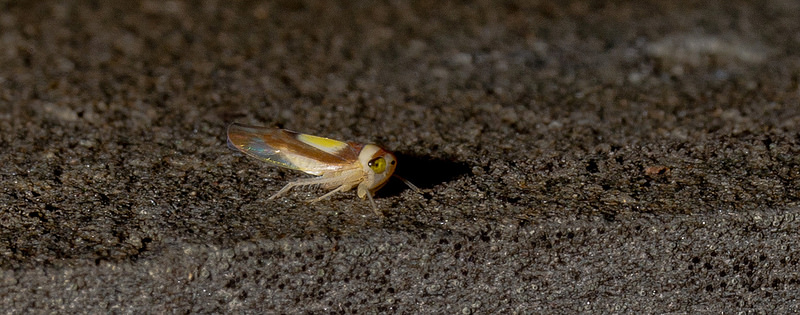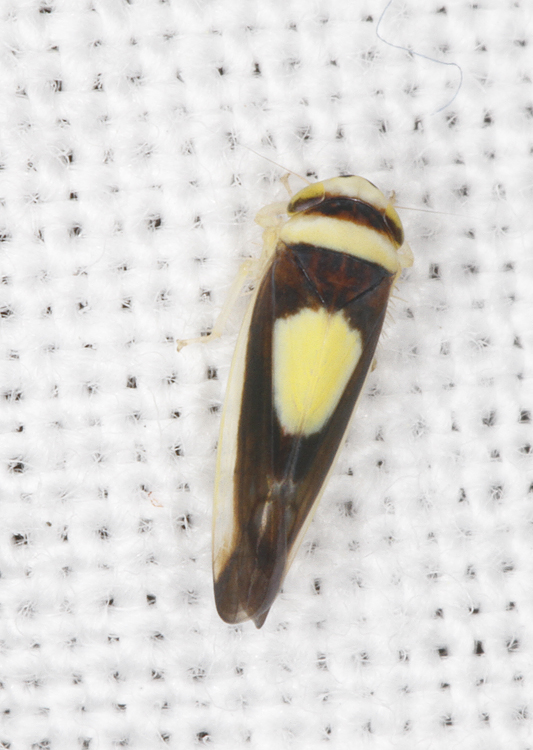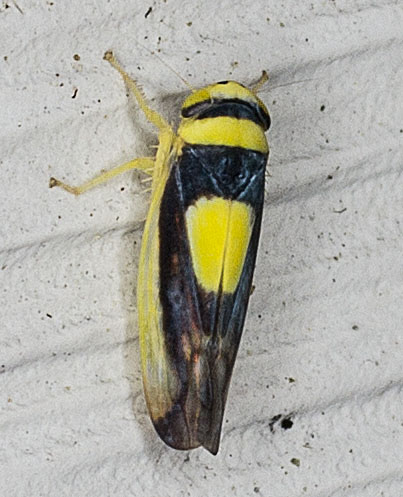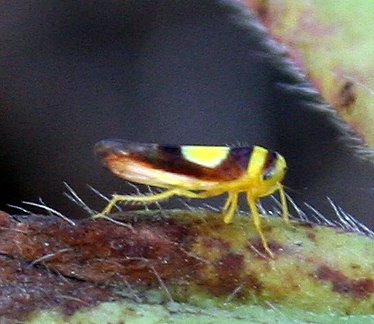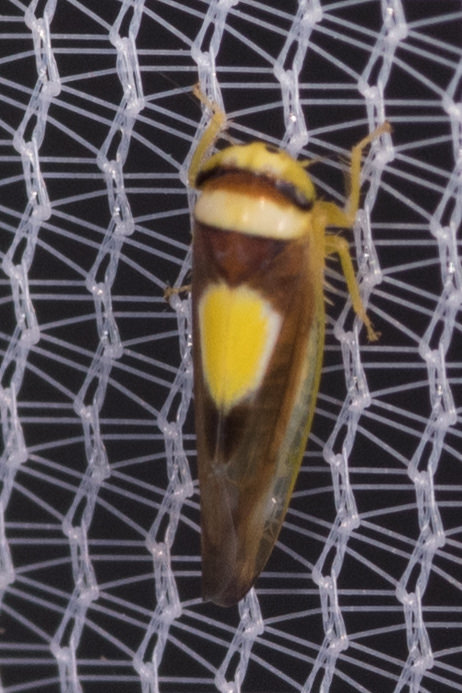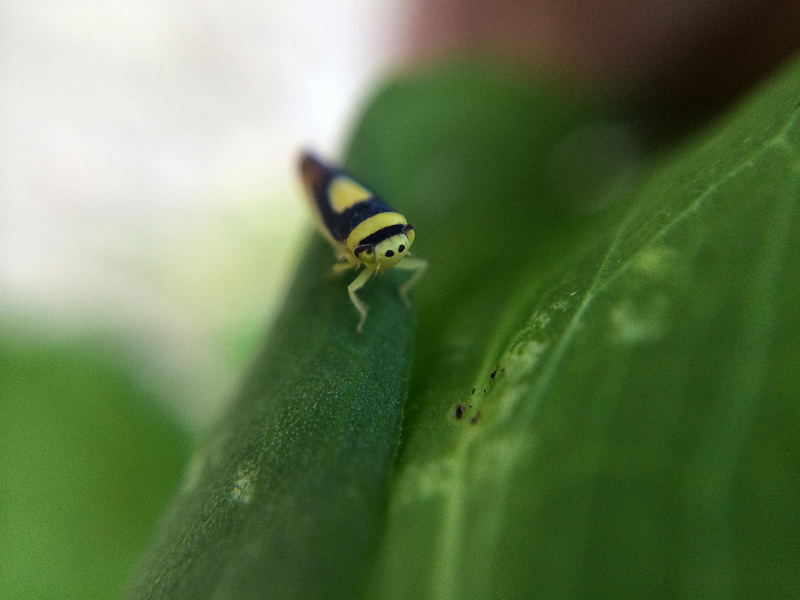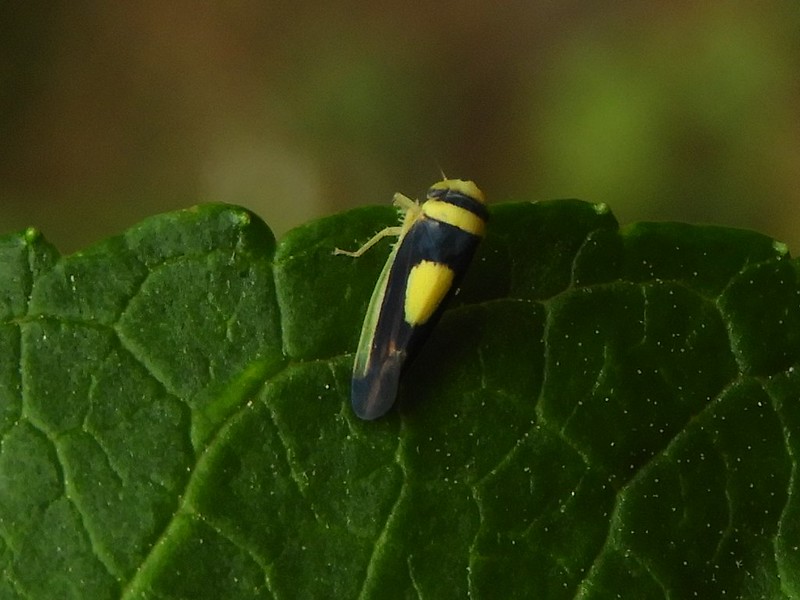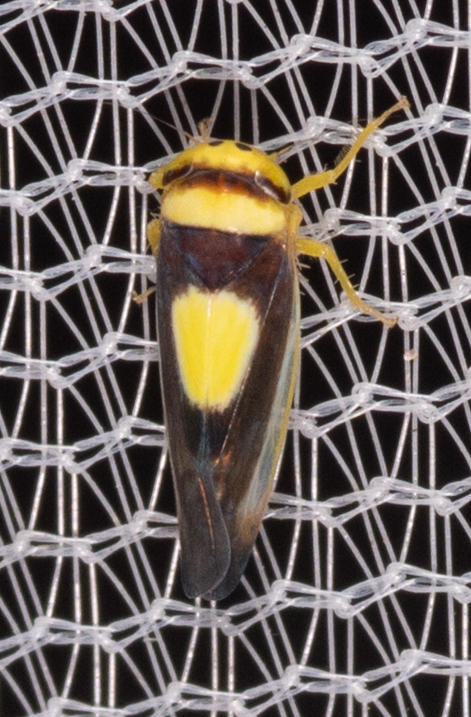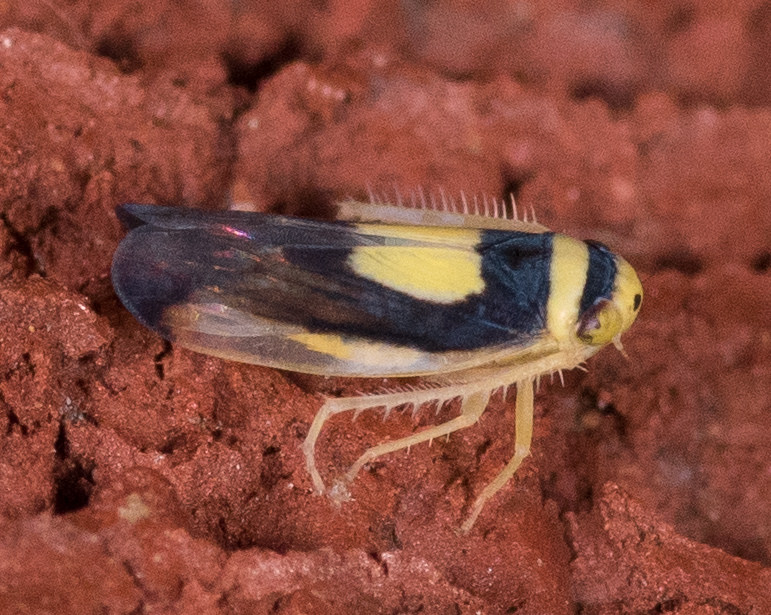Map Snapshot



















169 Records
Status
Widespread in the eastern U.S.
Description
Large yellow "saddle" on back combined with alternating brown and white bands on head and thorax are diagnostic. On some individuals, these bands may be yellow, and the narrow white saddle border may be absent. The bi-colored eye is an extension of the head band pattern.
Seasonality Snapshot
Source: Wikipedia
| Colladonus clitellarius | |
|---|---|

| |
| Scientific classification | |
| Domain: | Eukaryota |
| Kingdom: | Animalia |
| Phylum: | Arthropoda |
| Class: | Insecta |
| Order: | Hemiptera |
| Suborder: | Auchenorrhyncha |
| Family: | Cicadellidae |
| Genus: | Colladonus |
| Species: | C. clitellarius
|
| Binomial name | |
| Colladonus clitellarius (Say, 1830)
| |
Colladonus clitellarius, the saddled leafhopper, is a species of leafhopper in the genus Colladonus.[1]
Description
[edit]Adults of C. clitellarius are 5 to 6 mm long, with males often being slightly smaller than females.[2] Their overall coloration is brown to black with a bright green "saddle" shaped mark on their back being a key diagnostic feature of the species, alongside brown and green or white stripes on the head. This pattern extends into the insects' eyes, resulting in a bi-colored appearance.[3]
Colladonus clitellarius nymphs share similar coloration to adults, though paler and with mottled patterns.[4]
Range and habitat
[edit]The saddled leadhopper occurs in eastern North America. It resides primarily in forested environments in the northeastern United States and southeastern Canada.[3][5]
Ecology
[edit]Adults are found most commonly from May to November. Major host plants for the species include willows, honey locusts, and the mile-a-minute vine.[6] It is also a known vector of Cherry X Disease in peaches.[2][4]
Etymology
[edit]The specific epithet "clitellarius" comes from the Latin word meaning back-saddled.[7] This, alongside its common name "saddled leafhopper", is in reference to the saddle-like green marking on the backs of adults in this species.[citation needed]
References
[edit]- ^ "USDA".
- ^ a b "Minnesota Seasons - saddleback leafhopper". minnesotaseasons.com. Retrieved 2023-11-18.
- ^ a b "Maryland Biodiversity Project - Saddleback Leafhopper (Colladonus clitellarius)". marylandbiodiversity.com. Retrieved 2023-11-18.
- ^ a b "Hoppers of North Carolina". auth1.dpr.ncparks.gov. Retrieved 2023-11-18.
- ^ "NatureServe Explorer 2.0". explorer.natureserve.org. Retrieved 2023-11-18.
- ^ "Colladonus clitellarius". Discoverlife.org.
- ^ "Charlton T. Lewis, Charles Short, A Latin Dictionary, clītellārĭus". perseus.tufts.edu. Retrieved 2023-11-18.
